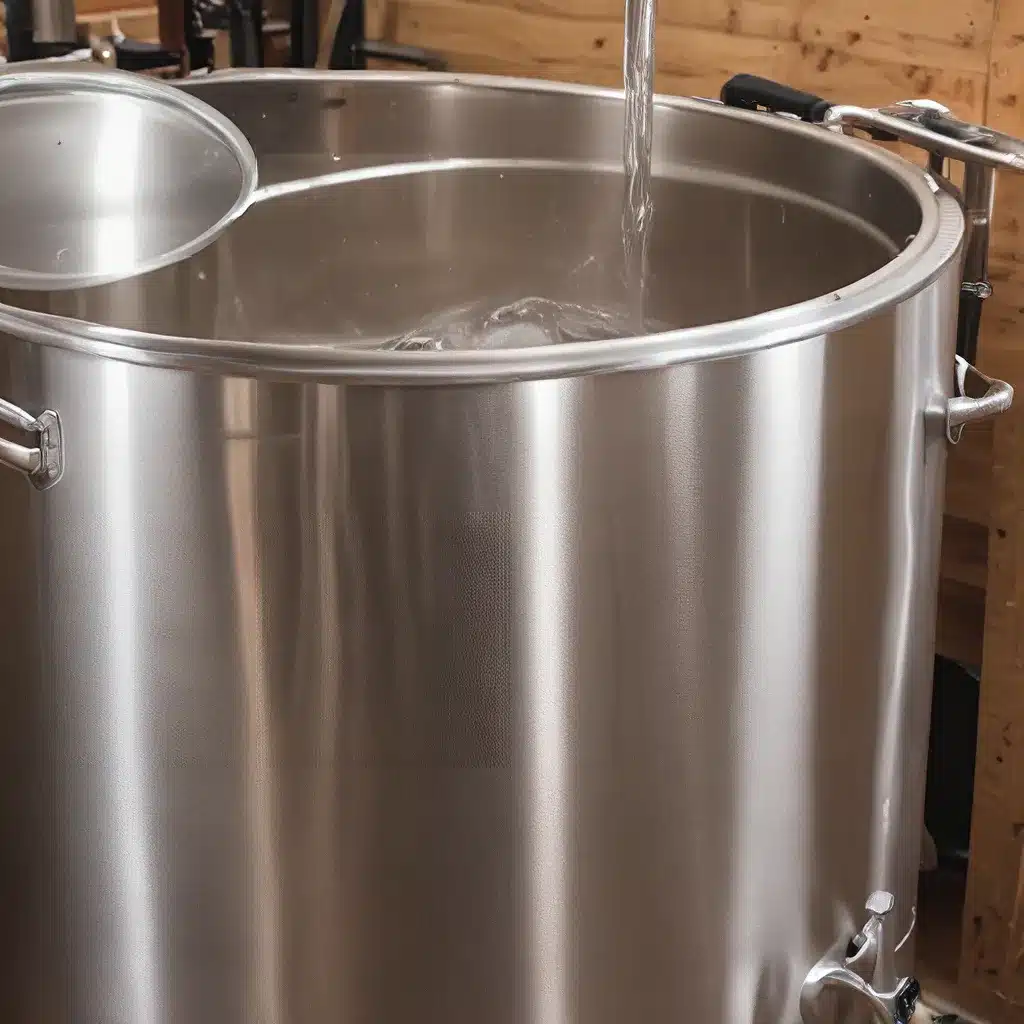
Exploring the Art of Homebrewing
You know, when it comes to brewing beer, I’ve always been a bit of a mad scientist at heart. There’s just something captivating about taking a simple grain, water, and yeast, and transforming it into a bubbly, aromatic masterpiece. And for me, the real magic happens in the mash tun.
I remember the first time I tried my hand at all-grain brewing. I was like a kid in a candy store, surrounded by all these gleaming pots, pipes, and mysterious vessels. It was like being let loose in a medieval alchemist’s workshop. But once I got the hang of it, I realized that mashing grain is where the true brewing artistry lies.
Unlocking the Power of Enzymes
You see, when you mash malted grain, you’re unleashing a whole symphony of enzymes that work to convert starch into fermentable sugars. It’s like conducting a tiny biological orchestra, with alpha and beta amylase playing the lead roles. And by carefully controlling the temperature and timing of the mash, you can coax out just the right flavors and body you’re after.
Now, I know what you’re thinking – “That sounds way too complicated!” But trust me, once you get the basics down, it’s not as daunting as it seems. It’s all about finding that sweet spot where the enzymes can do their thing without going overboard.
The Single-Infusion Mash: A Homebrewer’s Best Friend
For most homebrewers, the single-infusion mash is the way to go. It’s simple, reliable, and works great for a wide range of beer styles. Just heat up your strike water to the right temperature, mix it with your crushed grain, and let the enzymes work their magic for about an hour. Easy peasy!
Of course, if you’re feeling adventurous, you can always experiment with more complex mash schedules. A classic two-step mash, for example, with a lower-temperature rest to favor beta amylase, followed by a higher-temp rest to boost alpha amylase. But for most everyday batches, the single-infusion is hard to beat.
Mastering the Mash Tun
Now, when it comes to the actual mash tun, you’ve got a few options. Some homebrewers swear by their trusty cooler-based systems, while others prefer the convenience of a dedicated mash tun. The Up and Under Pub even has a great selection of mash tuns and other brewing equipment if you’re in the market.
Personally, I’m a bit of a minimalist. I’ve had great success with a simple setup – a big ol’ brew kettle and a makeshift lauter tun made from a plastic bucket and some copper tubing. It might not be the fanciest rig, but it gets the job done. And you know what they say, “The simplest solutions are often the best.”
The Art of Sparging
Of course, once your mash is complete, you’ve got to move on to the sparging stage. This is where you rinse the sugary wort from the grain bed, collecting it for the boil. And let me tell you, proper sparging technique is an art form all its own.
The key is to maintain a nice, steady flow of hot sparge water, carefully controlling the temperature to avoid tannin extraction. Too fast, and you’ll end up with a cloudy, bitter wort. Too slow, and you’ll leave precious sugars behind in the grain. It’s all about finding that perfect balance.
The Importance of pH
Now, I know what you’re thinking – “pH? Really? That’s getting a bit too sciencey for me.” But trust me, it’s an important factor, especially when it comes to traditional styles like sahti or other farmhouse ales.
You see, the pH of your mash can have a big impact on enzyme activity, hop bitterness, and even yeast performance. And while you don’t need to be a chemist to brew great beer, a little bit of water chemistry know-how can go a long way.
Embracing the Unexpected
But you know, the best part of homebrewing, at least for me, is the element of surprise. You can follow all the recipes and techniques to a T, and still end up with something totally unexpected. Maybe it’s a new and unique flavor profile, or a wild, funky character that takes you by complete surprise.
And that’s what keeps me coming back to the mash tun, time and time again. It’s the thrill of the unknown, the excitement of diving headfirst into the unknown. Because in the end, that’s what homebrewing is all about – exploring the past, present, and future of beer, one mash at a time.
So if you’re ready to take your homebrewing game to the next level, grab your brew kettle, fire up that mash tun, and get ready to unlock the secrets of the mash. Who knows what kind of magical elixir you’ll end up with – the possibilities are as endless as the bubbles in your freshly poured pint.

